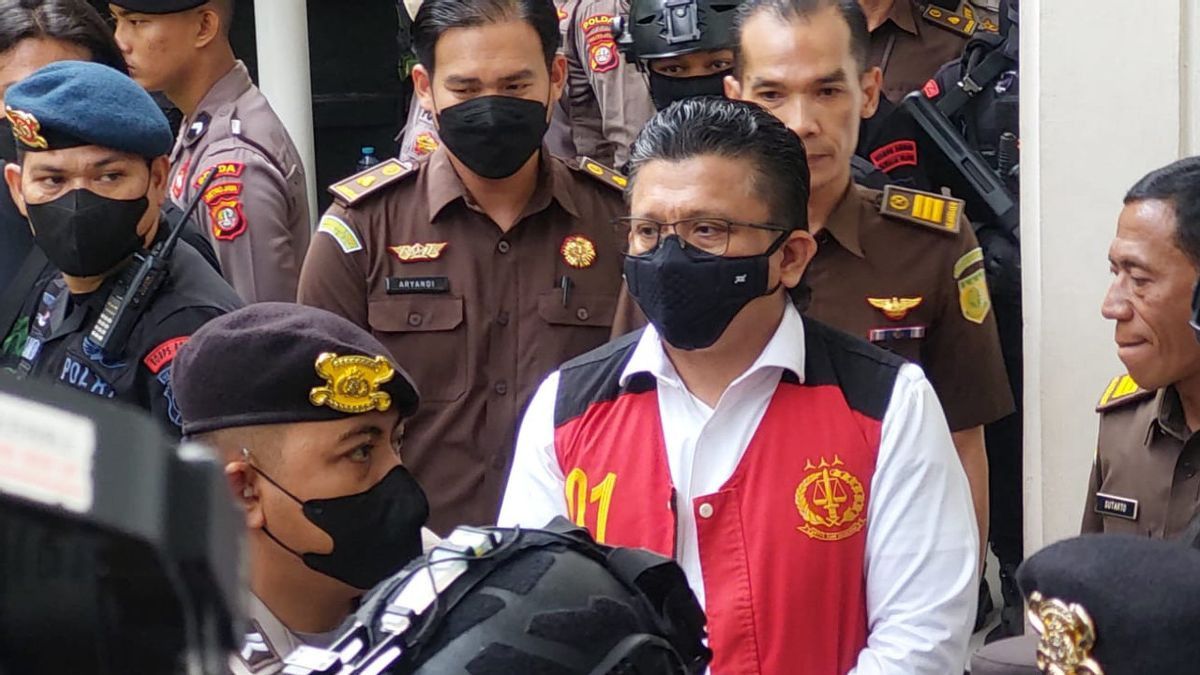YOGYAKARTA - Former Head of the Propam Police Division, Ferdy Sambo, was sentenced to death by the South Jakarta District Court Judges for the murder case of Nofriansyah Yosua Hutabarat (Brigadir J).
"The defendant Ferdy Sambo has been legally and convincingly proven guilty of committing a criminal act, participating in premeditated murder... together," said Chief Judge Wahyu Iman Santosa during a trial reading Ferdy Sambo's decision at the South Jakarta District Court, Monday, February 13.
In its decision, the panel of judges believes that Ferdy Sambo has violated Article 340 of the Criminal Code in conjunction with Article 55 Paragraph 1 to (1) of the Criminal Code.
According to the panel of judges, considering mitigating and burdensome things when deciding for Ferdy Sambo.
For burdensome matters, Ferdy Sambo is considered complicated when giving testimony. He also committed a crime against his own aide and caused tremendous noise. Ferdy Sambo is also considered to tarnish and drag many police officers into a legal case. Then, did not admit his actions.
So, what is the death penalty? What is the legal basis? How is the flow of the implementation of the death penalty in Indonesia? To find out the answer to this question, see the following article.
Roeslan Salah in Stelsel Pidana Indonesia (1987) said the death penalty was the toughest type of crime according to Indonesia's positive law.
Meanwhile, according to the Big Indonesian Dictionary (KBBI), the death penalty is the death penalty for the convict.
Adapted from the website of the Ministry of Law and Human Rights of South Sulawesi, the death penalty or death penalty is a practice committed by a country to kill someone as punishment for a crime. In Dutch, the death penalty is known as doodstraf.
The basis of the Law of the Dead Criminal
The death penalty in Indonesia was initially regulated in Article 11 of the Criminal Code. The article reads:
The death penalty was carried out by the executioner at the hanger by entangling the rope tied to the hanger on the neck of the convict, then dropping the board where the convict was standing.
The implementation of the Dead Criminal Execution was later amended by Law (UU) Number 02/Pnps/1964 concerning Procedures for the Implementation of the Dead Crime which was imposed by the Court in the General Court and Military.
The provisions for implementing the death penalty listed in Law Number 0202/Pnps/1964 have again changed with the issuance of the National Police Chief Regulation Number 12 of 2010 concerning Procedures for the Implementation of the Dead Crime.
Adapting to the 2007 Legal Syiar Journal, in the Criminal Code there are nine types of crimes that are punishable by the death penalty, including:
The flow of the Implementation of the Dead Crime in Indonesia.
According to the National Police Chief Regulation Number 12 of 2010, the implementation of the death penalty in Indonesia is carried out with the following flow:
That is information about the legal basis and the flow of the implementation of the death penalty in Indonesia. Get the latest news updates only on VOI.ID.
The English, Chinese, Japanese, Arabic, and French versions are automatically generated by the AI. So there may still be inaccuracies in translating, please always see Indonesian as our main language. (system supported by DigitalSiber.id)













